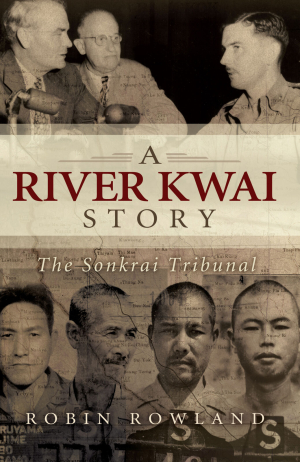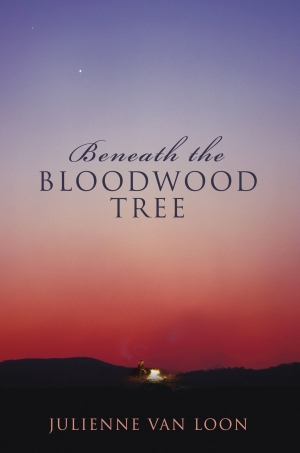Allen & Unwin
Stuart Macintyre reviews ‘Manning Clark: A life’ by Brian Matthews
This life begins with a ritual its subject practised through the 1960s and 1970s. Manning Clark would visit St Christopher’s Cathedral, Canberra, kneel before its shrine of the Virgin, ask assistance in fighting his need for alcohol, and beg forgiveness and peace. While Clark’s funeral was a requiem mass at St Christopher’s, and a preoccupation with the Catholic faith became increasingly evident in his later years, this is not a beginning that those who read his history or became familiar with his public appearances would expect.
In relating these regular visits to the shrine, Brian Matthews signals the themes that run through this life of Clark. There is his susceptibility to alcohol and the way that it exacerbated his erratic behaviour. There is the fraught character of his most intimate relationships, and his persistent torment of anguish and guilt. There is his intellectual ambition, his need for reassurance and vulnerability to criticism. And there is his constant search for faith.
... (read more)Deception is an historical novel that adds to the emergent school of literary fiction concerned with dramatising historical investigation. As with any subgenre, certain conventions abide. The protagonist tends to be male, dour, a bit of a loner. His quest is usually sparked by a relic of some kind: a cache of letters, a photograph. Ultimately, history is shown to impinge on the present; the musty conundrums surrounding the relic are resolved; the protagonist may experience a vague epiphany.
... (read more)Jay Daniel Thompson reviews 'Tolerance, Prejudice and Fear' by Christos Tsiolkas, Gideon Haigh and Alexis Wright
Tolerance, Prejudice and Fear comprises a trio of essays commissioned by the Sydney PEN. According to its website, PEN is ‘an association of writers devoted to freedom of expression in Australia’. In this book, three major Australian authors discuss the roles that tolerance, prejudice and fear have played in contemporary Australian society. This is a society in which traditional ideas about national identity and race have been variously championed and attacked. The result is thought-provoking and engrossing.
The text opens with Christos Tsiolkas’s essay on tolerance. Tsiolkas argues that it is no coincidence that a liberal ‘politics of tolerance’ has become popular during an historical period in which neo-conservatism has flourished. Gideon Haigh follows with an essay on the cultural ‘narcissism’ that swept through Australia during John Howard’s eleven years as prime minister. During this period, Haigh argues, Australian culture became ‘shallow, thick-skinned, aloof from the world’s problems, impervious to the sufferings of others – then retracting in angry confusion at the hint of questioning, raging petulantly when crossed …’ The third piece is Alexis Wright’s analysis of the harmful and infectious nature of fear. This is a topic that both Tsiolkas and Haigh raise at different points in their essays. Wright argues that Anglo-Australians have long been socialised to fear ‘Aboriginal people and … law’, while a ‘fearfulness of white Australia’ has arisen within Aboriginal culture. Wright concludes her piece by arguing that literary fiction can offer an effective mode of political resistance in a period when both major political parties in Australia are essentially singing the same neo-conservative tune.
... (read more)Jay Daniel Thompson reviews 'Tasmania's Wilderness Battles: A History' by Greg Buckman
In Tasmania’s Wilderness Battles, Greg Buckman provides a history of the environment movement in Tasmania. He focuses on the various battles that have taken place between environment activists and those developers that have viewed Tasmania’s wilderness as being purely a source of profit.
Buckman opens with the Lake Pedder battle in the 1960s. This battle was waged between activists and the Hydro Electric Commission, and was significant for ‘its radicalising influence on the Tasmanian environment movement’. Buckman moves on to describe disputes over the Franklin River, the Farmhouse Creek forest and the Gunns pulp mill. Buckman concludes by arguing that Tasmania needs to adopt a more ‘enlightened view of wilderness’.
... (read more)In death, as in life, Manning Clark casts a long shadow. The author of A History of Australia (1962–87) remains a figure of considerable interest and contention in intellectual and cultural debate. Clark’s imposing oeuvre has its detractors and admirers. In pioneering a fresh and richly imagined awareness of national history for a post-World War II generation of Australians, Clark was an inspiring teacher. He encouraged his students to work with primary source materials. In doing so he assembled for publication three volumes of Australian historical documents that brought the underpinnings of Australian history into the ken of general readers. The publication of these documents served as something of a dress rehearsal for the great task Clark set himself: to write a version of the Australian story he conceived in grandeur and tragedy, nobility and ordinariness. As Carl Bridge has noted, Clark’s History has been seen by some as ‘a majestic blue gum of Australian historical scholarship’, and by others as ‘gooey subjective pap’. With the appearance of each volume, reviewers were sharply divided about the merits of Clark’s style, his interpretation, and even the veracity of his history. But while doubts remain, distance has conceded to the History its standing as a work of literature of the imagination that might sit in the same company as the paintings of Arthur Boyd and Sidney Nolan, or the novels of Patrick White.
... (read more)Despite increasing competition from Internet search engines and online encyclopedias, quality information titles for children continue to be produced in Australia. Well-researched non-fiction books that bring their subject matter to life can have a much greater impact on an inquisitive mind than is the case with the fact-bites of Google.
... (read more)Pitched awkwardly between mass-market romance and a literary novel, Musk and Byrne is a curious creation. Spending excessive verbal effort on a familiar and rather vacuous plot, the book never finds a satisfactory shape, and finally lacks a true purpose. Never intellectually thorough enough to offer an exploration of artistic identity, and not trashy enough to deliver tawdry thrills, it is both too well written and not very original.
... (read more)John Connor reviews 'A River Kwai Story: The Sonkrai Tribunal' by Robin Rowland and 'The Men of the Line: Stories of the Thai–Burma railway survivors' by Pattie Wright
These two books on the building of the Thai–Burma railway in World War II are very different in format and tone. Australian film-maker Patti Wright’s Men of the Line is an exquisitely designed collection of stories and images by Australian prisoners of war who were forced to build the railway for their Japanese captors. Wright describes her book as ‘a tribute to the ex-POWs who experienced the best and worst that human nature can offer and returned to tell the tale’. Canadian journalist Robin Rowland’s A River Kwai Story: The Sonkrai Tribunal is a solidly researched investigation that concentrates on F Force, the group of Australian and British prisoners that suffered the worst death rate on the railway, and the postwar war crimes trial that found seven Japanese soldiers guilty of the ‘inhumane treatment’ of these men. Rowland concludes that the Japanese did commit war crimes; she also exposes failures by Australian and British officers that increased the POWs’ suffering.
... (read more)Peter Pierce reviews ‘Beneath the Bloodwood Tree’ by Julienne van Loon
Julienne van Loon won the Vogel Literary Award for 2004 with Road Story. Now, with Beneath the Bloodwood Tree, van Loon has passed the hurdle or hoodoo of getting a second novel written and published, although not with ease, and apparently with no resolved sense of the kind of novel she was intending to write.









